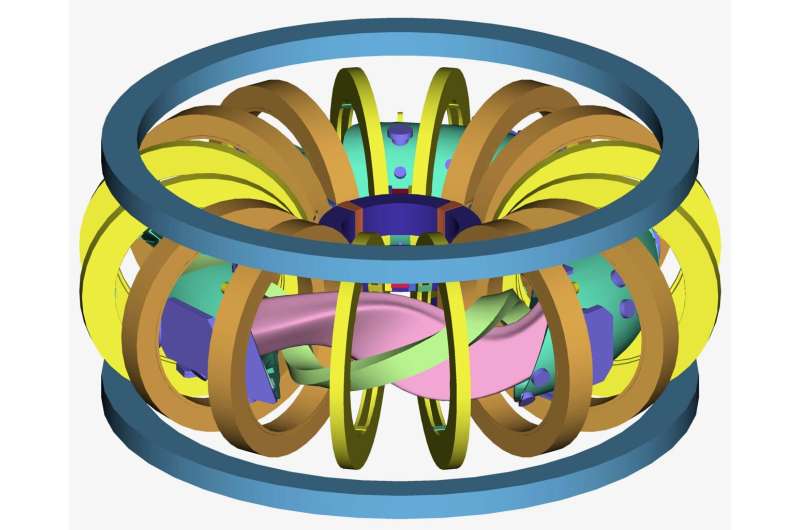This article has been reviewed according to Science X's editorial process and policies. Editors have highlighted the following attributes while ensuring the content's credibility:
fact-checked
trusted source
proofread
Cooking up plasmas with microwaves

Lead author Yurii Victorovich Kovtun, despite being forced to evacuate the Kharkiv Institute of Physics and Technology amid the current Russia-Ukraine war, has continued to work with Kyoto University to create stable plasmas using microwaves.
Getting plasma just right is one of the hurdles to harnessing the massive amounts of energy promised by nuclear fusion.
Plasmas—soups of ions and electrons—must be held at the right density, temperature, and duration for atomic nuclei to fuse together to achieve the desired release of energy.
One recipe involves the use of large, donut-shaped devices with powerful magnets that contain a plasma while carefully aligned microwave generators heat the atomic mixture.
Now, the Institute of Advanced Energy at Kyoto University, together with the Kharkiv Institute and the Max Planck Institute for Plasma Physics have collaborated to create plasmas with fusion-suitable densities, using microwave power with low frequency.
The research team has identified three important steps in the plasma production: lightning-like gas breakdown, preliminary plasma production, and steady-state plasma. The study is being conducted using Heliotron J, the latest iteration of experimental fusion plasma devices at the Institute of Advanced Energy, located on KyotoU's Uji campus in south Kyoto.
"Initially, we did not expect these phenomena in Heliotron J but were surprised to find that plasmas were forming without cyclotron resonance," group leader Kazunobu Nagasaki explains.
Building on decades of experience, Nagasaki's team is exploring the fusion plasma discharges in Heliotron J.
The team injected intense bursts of 2.45-GHz microwave power into a feed gas. Microwave ovens in the home operate at this same frequency but Heliotron J is around 10 times more powerful and concentrated over a few gas atoms.
"Unexpectedly, we found that blasting the microwaves without alignment of Heliotron J's magnetic field created a discharge that ripped electrons from their atoms and produced an especially dense plasma," marvels Nagasaki.
"We are extremely grateful that our colleague could continue supporting the study, despite the war in Ukraine. Our findings about this method to generate plasmas using microwave discharge may simplify fusion research in the future."
The research is published in the journal Problems of Atomic Science and Technology.
More information: Yu.V. Kovtun et al, Non-resonant microwave discharge start-up in Heliotron J, Problems of Atomic Science and Technology (2023). DOI: 10.46813/2023-143-003
Provided by Kyoto University




















